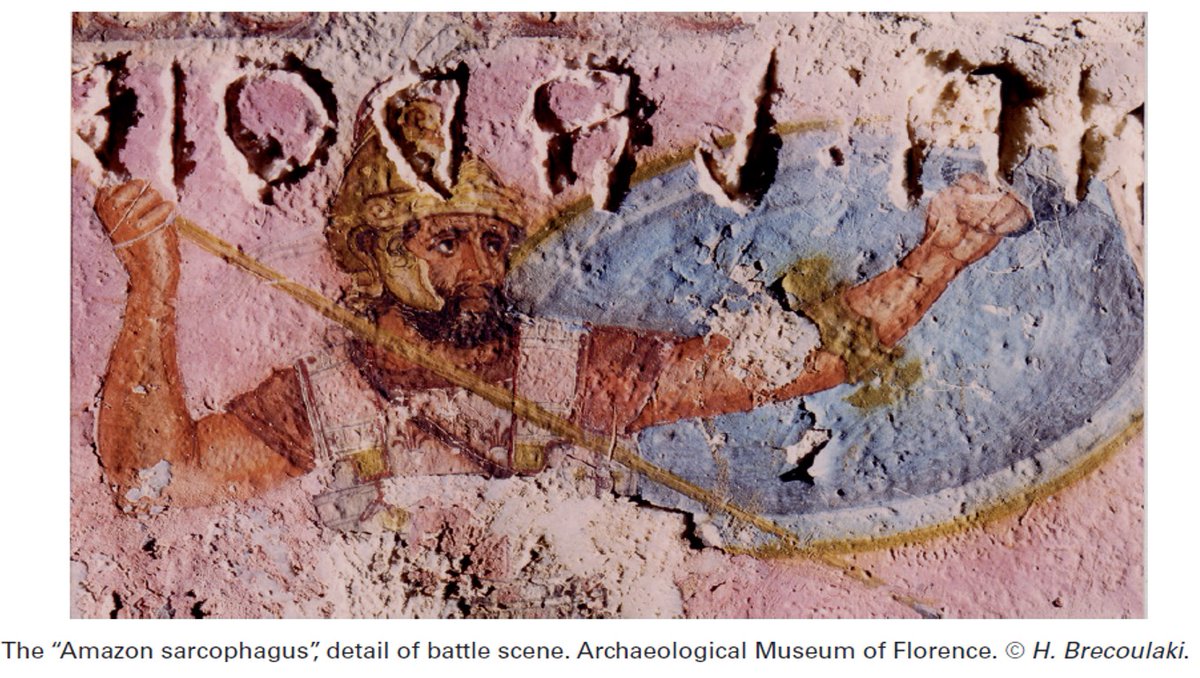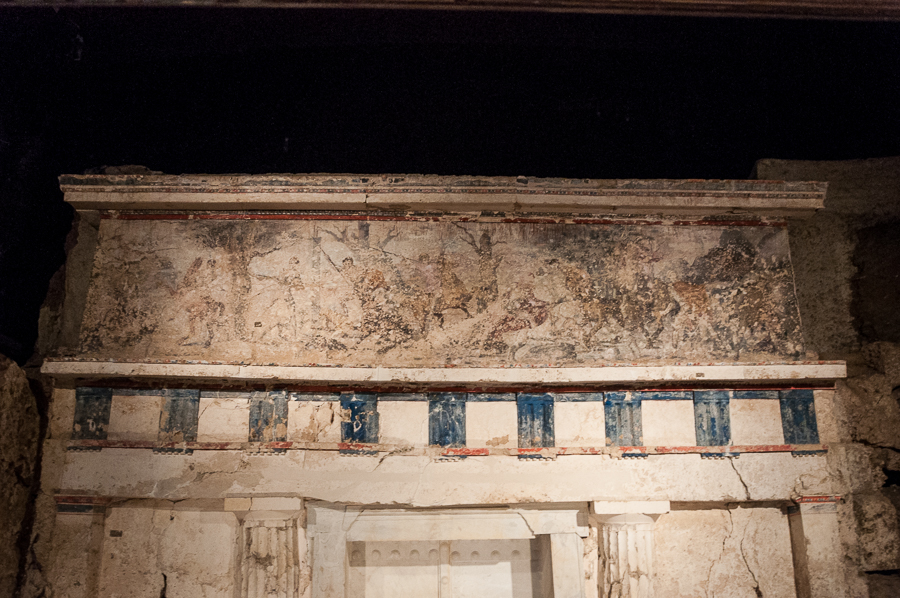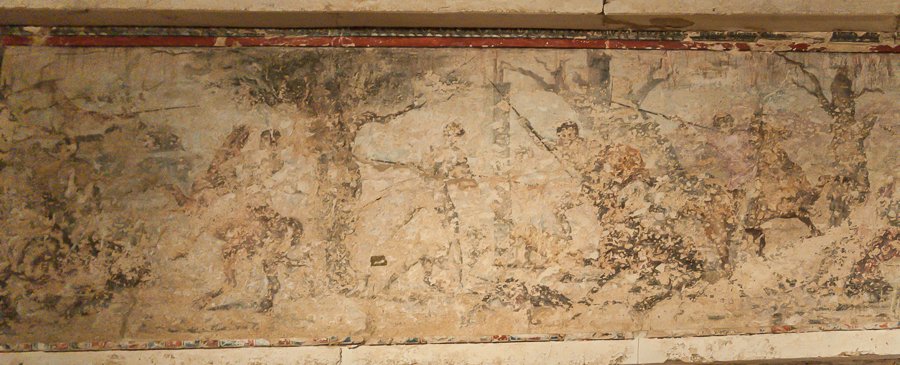In today’s #thread we will be talking about Late Classical and Hellenistic painting techniques, from Greece and Macedon to present-day Bulgaria and Italy. Aren’t these Tyrian purple backgrounds from Tomb III (Aghios Athanassios) and the Amazon sarcophagus just stunning?
There are two main painting techniques associated to Late Classical and Hellenistic art: secco, which makes use of a binding medium to fix the pigments, and fresco, which is based on the application of the pigments on a fresh lime plaster. https://twitter.com/Oskar_KimikArte/status/1115150537219919872
Two binding media have been documented in examples dating back to this period: gum arabic and egg tempera. The superb marble throne found at the Tumb of Eurydice (Vergina) was painted using gum arabic as binding medium for the secco technique. https://twitter.com/CARAA_Center/status/1251101505077350404
Among the pigments used in this throne, we can mention #EgyptianBlue, malachite green, red cinnabar and the application of pure gold leaf. https://twitter.com/ColorsAndStones/status/1255063693924208646
In addition, the painting depicting a royal hunt at Tomb II (Vergina) is said to have been executed as well according to the secco technique, although no analytical data are available yet. https://twitter.com/ars_omnis/status/1127945540963061761
In this painting, #EgyptianBlue was used both alone and mixed with calcite to yield a green hue. Besides, both red ochre (haematite) and cinnabar were found in the red tones.
Certain authors have suggested that the paintings of this Thracian tomb (Kazanluk, Bulgaria) could have been executed with a mixture of the fresco technique and the use of wax as a binder. However, this has not been confirmed yet. https://twitter.com/RB_English/status/748430461031055360
Some of the pigments detected in the mural paintings of this Thracian tomb are: #EgyptianBlue, red and yellow ochre and carbon black. https://twitter.com/gonanaimo/status/1187072418671517698
The best example of the ancient use of encaustic or wax painting are still these mummy portraits of Al-Fayoum, (Roman Egypt). https://twitter.com/PaulWelsh89/status/1277992639921557504
The fresco technique differed also from one place to another, especially regarding the plaster layers. In the House of Comedians (Delos) there are up to five layers: an arriccio with terracotta aggregates, two lime-quartz plasters and two lime-marble plasters.
The preparation layer employed in the Tarquinian tombs is also variable. In the VI and V century BCE paintings, a mixture of powdered fossil limestone and white clay or grey clay layers were applied in order to enhance the brilliance of the colours. https://twitter.com/artinsociety/status/1253942353028509696
The use of plasters as preparatory layers, as we have seen for the House of Comedians at Delos and Pompeian mural paintings, which provide a mirror-like surface after intensive polishing, was introduced in the second half of the IV-III B.C. https://twitter.com/ArtifactsHub/status/1274007004810366981
Preparatory drawings were incised or painted with diluted colours. Regarding the throne of Eurydice, the exact outline is precisely established, while the paintings of that tomb were roughly laid out in freehand. https://twitter.com/serbiaireland/status/1248190489888776192
The preparatory drawing of the tomb of Lyson and Kallikles (Lefkadia) was both incised and painted on fresh lime plaster, using the cord technique to snap a grid of horizontal and vertical lines, as an indirect method to transfer the original drawing. https://twitter.com/ArmaOrientalis/status/1045085452875812864
It is interessting to note how the opacity of the pigments was used to create transparent paint layers. According to Pliny, Polygnotus from Thasos was the first to depict women with see-through clothing. To this aim, lake pigments were applied over white. https://twitter.com/tzoumio/status/1007516677645520896
To finish this #thread, some interesting reads on Late Classical and Hellenistic painting techniques:
https://www.cairn.info/revue-archeologique-2014-1-page-3.htm#
https://www.tandfonline.com/doi/abs/10.1179/sic.2002.47.Supplement-1.56
https://www.sciencedirect.com/science/article/pii/S0143720817319873?via%3Dihub
https://www.cairn.info/revue-archeologique-2014-1-page-3.htm#
https://www.tandfonline.com/doi/abs/10.1179/sic.2002.47.Supplement-1.56
https://www.sciencedirect.com/science/article/pii/S0143720817319873?via%3Dihub
Aquí te cuento este #hilo en castellano: https://twitter.com/cinnabarim/status/1281962336941756419

 Read on Twitter
Read on Twitter







